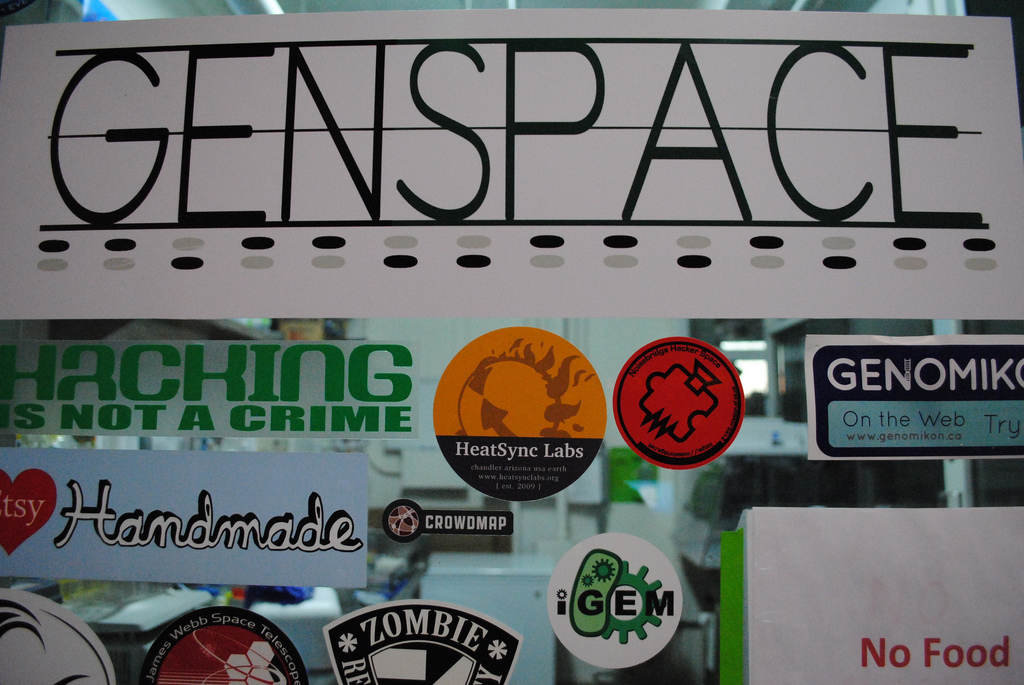This Thursday night, Brooklyn cool-science org Know Science will host This is Your Brain on Technology: The Science of Human Performance at Genspace in Downtown Brooklyn.
RSVP
That’s a cool title, so we wanted to find out more, and had ourselves a lil interview with the speaker of the night, Dr. David Putrino of Weill Cornell Medical College.
###
Technical.ly Brooklyn: What is most interesting to you right now with what’s going on in technology?

Dr. David Putrino. (Photo via LinkedIn)
Dr. David Putrino: For years now, there have been a lot of people talking about how technology can transform healthcare, but there was very little action. Now, for the first time, we’re finally reaching a point where technology is actually being integrated successfully into the delivery of clinical care. My lab is working on exciting projects across many fields: impact monitoring for concussion, motion capture for fall prevention in the elderly, immersive virtual reality for pain management, mobile apps for suicide prevention, digital games and non-invasive brain stimulation for stroke rehabilitation.
My greatest interest in the space is actually studying how to integrate these solutions into a standard clinical workflow. Cool tech is one thing, but building it into a functional and workable solution that can actually impact lives, and be readily adopted by clinicians is quite another. That is the challenge that my lab works to address.
TB: In aggregate, we’re spending a lot of money on healthcare and procedures. What likelihood is there for technology to bring that cost down so we can spend our healthcare money on things that are more fun to spend on?
DP: I think that as technology continues to be integrated into clinical care, there is great opportunity for cost-savings that will translate into less cost and better health. Really, the message here is that better health translates to lower healthcare costs, and so we must engage the community to understand this message.
There are many apps and devices that are already out there that can teach people to be more healthy in their lifestyle choices. In addition, we’re starting to get technology out to community to improve health. I’m the Principal Investigator of an initiative in Westchester County called the Telehealth Intervention Program for Seniors (TIPS) — TIPS is a remote patient monitoring initiative for individuals who are over the age of 65, managing two or more chronic conditions, and live at or below the poverty line. These individuals typically cannot afford to visit a doctor, and so end up in the emergency rooms, when they experience exacerbations of their chronic conditions. Via the TIPS initiative, we are currently tracking almost 900 low socioeconomic status elderly individuals living with chronic conditions in Westchester County, and we have succeeded in significantly decreasing the frequency of emergency room visits. Initiatives such as TIPS can significantly decrease the costs of ongoing healthcare costs for the entire community.
TB: What matters more for improving public health: technology or large-scale behavioral changes? You’re going to say both, please don’t say both.
DP: Hahaha. I would never say both. Large-scale behavioral change is the only thing that matters, technology is a secondary means to an end.
Much of what my lab studies is focused on how to create models that engage the public in healthcare initiatives — technology can be a great way of accomplishing this, but if you don’t have public engagement, then the technology just becomes useless. I think a lot of emerging e-health businesses and companies forget this, and it is to their detriment: they create a tech solution that appears to solve a healthcare problem, but they don’t design it to be quick, easy and easy to merge with a clinical environment.
As we start to understand the science of wellness better, we need to communicate that knowledge to the public in a way that is engaging and understandable. This is what triggers large-scale behavioral change and why I am so passionate about, and proud of the work that Know Science does. Education empowers people, and puts them in a position to advocate for themselves and make changes to their own lifestyles. Technology is one means by which individuals can drive behavioral change, but it is not the only one.
Before you go...
To keep our site paywall-free, we’re launching a campaign to raise $25,000 by the end of the year. We believe information about entrepreneurs and tech should be accessible to everyone and your support helps make that happen, because journalism costs money.
Can we count on you? Your contribution to the Technical.ly Journalism Fund is tax-deductible.
Join our growing Slack community
Join 5,000 tech professionals and entrepreneurs in our community Slack today!
